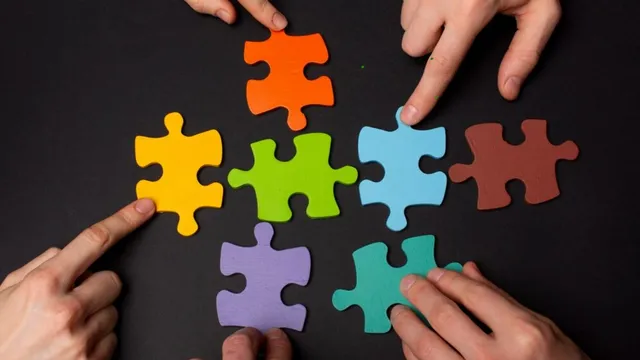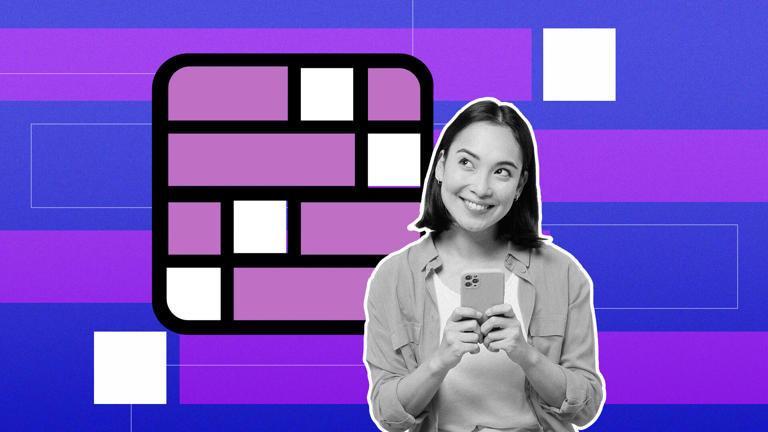The daily puzzle scene is always changing, and the Connections problem is among the newest sensations grabbing the brains of aficionados. This all-inclusive book will help you get an advantage in your everyday difficulty whether your search is for “answers to connections today” or just want to learn more about methods and advice. While making sure you enjoy the process and keep the integrity of the challenge, this article investigates what the Connections puzzle is, analyzes daily answer trends, discusses successful tactics, and offers ideas on how you may improve your problem-solving skills.
The Puzzle of Connections?
Players of the Connections problem, a distinctive brain teaser, must discover secret connections between apparently unconnected words, images, or sentences. Like many well-known puzzles, the objective is to find trends or common themes tying together a particular collection of components. Every day a fresh set of links is shown, calling solvers to use their analytical tools and innovative ideas.
A Synopsis of Background and Growing Popularity
Word and picture puzzles have lately become very popular because of their complexity and the gratification of finding an answer after careful thought. For many, the Connections puzzle—which borrowed ideas from word association games and crossword puzzles—quickly became a daily ritual. Communities have developed where aficionados exchange advice, tactics, and occasionally suggestions to help beginners as gamers hunt “connections answers today” on social media and specialized websites.
How the Puzzle Functions
Usually, the problem asks you to arrange a grid or list of elements—words, pictures, or phrases—based on unseen links. The main components are:
Observation: Examine thoroughly every component and think about several interpretations.
Think about synonyms, cultural allusions, or shared topics in association.
Group the components according to common traits.
Deduce the possible answers by eliminating unworkable combinations.
Many gamers look online for “answers to connections today” in hopes of discovering a shortcut or a confirming tip after they have tried solving it on their own since the daily puzzle is made to change often.
The daily challenge is discovering the solutions right now.
Why Every Day Puzzle Has Everyone Talking
Daily challenges like Connections provide the ideal mix of difficulty and habit. Every day presents a fresh challenge testing not only your knowledge but also your capacity for creative thinking. The thrill comes from the unpredictability: what is clear one day could be utterly deceiving the next.
Many have evolved their search for “connections answers today” into a ritual. As players debate possible responses and compare their groups, websites, forums, and social media groups often hum with activity. While some people prefer to solve the puzzle alone, others value a group method whereby tips are shared without exposing the solution completely so maintaining the enjoyment.
The Value of Learning the Correct Approach
While depending on posted responses could satisfy you right away, it might also reduce the long-term delight and progress that results from working alone on puzzles. Learning good techniques guarantees not only that you approach the solution but also creates a mental structure improving your general cognitive ability.
Let’s so explore the techniques and advice that will enable you to solve the daily Connections puzzle—and why knowing the process is more important than just knowing “connections answers today.”
Techniques for Revealing Undiscovered Links
1. Examining Every Element Closely
Start by looking over every word, picture, or sentence the puzzle offers. Consider yourself:
What could the several meanings or linkages be?
Might there be a pun or a cultural reference at work?
Does any element have a common origin—that of a historical period or a certain industry?
Analyzing the components separately lays a strong basis for spotting connections.
2. Search for Several Meanings.
The Connections puzzle has several purposefully vague elements. One word could have numerous meanings. For instance, in one context a word could be a noun and in another a verb. Maintaining an open mind regarding all conceivable interpretations expands the range of your contacts.
3. Review Categories and Themes
Usually, the hidden links fit a wide spectrum including sports, literature, cuisine, or even emotions. Making a mental (or written) list of possible categories will help you to organize your ideas. Demand:
Might a well-known movie title have these words?
 Are elements for a well-known recipe present?
Are elements for a well-known recipe present?
Perhaps these are book or song titles.
Many puzzle aficionados find great help in grouping by category to sort the toughest problems.
4. Apply elimination’s method.
Think about temporarily putting some pieces aside if you notice they don’t seem to suit any common theme. Focus on the groups that seem to have a more obvious relationship. The remaining outliers usually start to make more sense as you create groupings; alternatively, you can find a supplementary theme linking them together.
5. pause and go over
Sometimes leaving the puzzle and coming back with fresh eyes will expose links you missed earlier. One can have a few minutes or an hour for this break. Many experienced puzzle solvers discover that their capacity to recognize patterns changes significantly with a brief break.
6. Talk To Others
While some purists would rather work alone on puzzles, talking with other aficionados can provide fresh ideas. For suggestions and tactics, online groups devoted to puzzles can be rather helpful (without immediately disclosing the whole answer). Many times, cooperative thinking results in “aha!” events that are both instructive and fulfilling.
Advice and Techniques to Improve Your Solving of Puzzles
Accept a flexible viewpoint.
Flexibility in thinking is among the most useful abilities you can have. Don’t grow overly committed to your first understanding of a word or image. As you learn fresh material, be ready to abandon or change your hypotheses.
Practice consistently.
Puzzle solving becomes better with experience, much as any ability. Schedule daily time to work on puzzles—even those outside of Connections. Logic puzzles, Sudoku, and crossword puzzles all help you to develop critical thinking and pattern recognition.
Track Your Procedure
Record the puzzles you solve in a digital note-book or journal. Jot down the techniques you used, the errors you ran into, and the discoveries you made. You will see repeating trends in your thinking over time, which will help you to adjust your strategy.
Test Your Own Skills with Variations
Try making your own Connections puzzle if you find the daily one to be either too easy or repetitious. Change phrases or pictures, create new rules, and try to stump your buddies. This reverse-engineering stimulates imagination as well as clarifies the game mechanics.
Remain Current with Community Insights.
Puzzle worlds are dynamic and fresh approaches are continually developing. Track blogs, social media profiles, or YouTube channels devoted to riddles. Participating in the community can help you to get new ideas and creative solving methods.
Where to Get Help (and When to Count on It)?
Communities & Online Forums
Many web forums can offer direction if you ever find yourself caught on a particularly difficult Connections challenge. Sites devoted to daily challenges sometimes have discussion sections where aficionados express their ideas without revealing the complete answer. Having these conversations can help, particularly if you’re trying for a nudge in the correct line.
Websites and Puzzle Blogs
Many blogs and websites provide thorough recommendations on approaches for solving puzzles. They might dissect past challenges, clarify shared themes, and offer detailed walkthroughs of effective approaches. Although direct answer sharing that could ruin the challenge of the day should be avoided, these tools are quite helpful in teaching strategic approaches to solve problems.
Groups on Social Media
Puzzle aficionados post advice and celebrate their achievements on websites including Reddit, Discord, and Facebook. Though these forums can be quite helpful for ideas and common tactics, occasionally they wander into offering direct “connections answers today.” Using them as a learning tool instead of a shortcut can help you to make sure you are honing your own ability to solve problems.
The Ethical Viewpoint on Solving Problems
Love the Process Over the Shortcut
Searching for “connections answers today” is enticing, particularly in front of a challenging puzzle. But depending just on direct responses will deprive you of the educational opportunity and the gratification from solving the riddle on your own. Every puzzle you alone work on sharpens your critical thinking and mental clarity.
Honour the Society
Respect and the common delight of solving problems define puzzle groups. Although hints and conversations are welcomed, think about the effects of exposing whole answers on social media or community forums. Many more fans like the difficulty and personal victory of cracking the code free from spoilers.
Construct Your Legacy as a Solver
Not only will you improve your own skills but also help the community by concentrating on techniques and learning from every challenge. By sharing your path, the ideas that resulted in a breakthrough, and the techniques that proved most effective, you can help others solve the issue and keep it interesting for everyone.
Practice Makes Perfect: Creating Your Own Puzzle-Solving Strategies
Think back on previous challenges.
Once a puzzle is solved, stop to consider your method. What worked effectively? Originally, which hints did you ignore? With time, you will create a personal approach that raises your success rate and efficiency in tackling next challenges.
Test Novel Approaches
Approaching the Connections puzzle has no one “correct” method. Try several approaches, from computer tools for organizing your ideas to visual mapping methods (such as drawing connections on paper). You will find what best fits your manner of thinking the more techniques you attempt.
Celebrate Minor Achievements
Every little discovery advances one toward increased skillful puzzle solving. Celebrate your improvement even if on your first try you do not answer the whole puzzle. Every realization inspires you to solve even more difficult problems going forward and boosts your confidence.
Stay Open-minded.
Those with the most experience sometimes have a habit of approaching problems from several angles. Finding hidden connections in a puzzle depends on one’s openness to see it from a different perspective, whether that means reinterpretting a clue or considering an unusual link between parts.
In conclusion
The Connections puzzle is a brain workout improving observation, pattern detection, and creative thinking rather than only a daily task. Whether your pursuit is for “answers to connections today” or just a means to hone your ability to solve problems, the path is as fulfilling as the end point.
Understanding the physics of the puzzle, using smart techniques, and interacting with the larger puzzle community will help you to approach daily problems differently. Recall that every puzzle presents a chance for education, development, and appreciation of the excitement of discovery. Accept the process instead of looking for a short cure; allow every difficulty hone your thinking and inspire fresh thoughts.
Continue studying and practicing; most essential, savor each moment of the experience completing the puzzle. Your commitment will not only bring you the solutions you are looking for right now but also equip you for even more difficult difficulties down road.
140 Characters for the Meta Description
Discover today’s Connections puzzle solutions, advice & techniques to improve your game. Discover secret connections and conquer all difficulty!
answers to connections today,
connections answers today,
